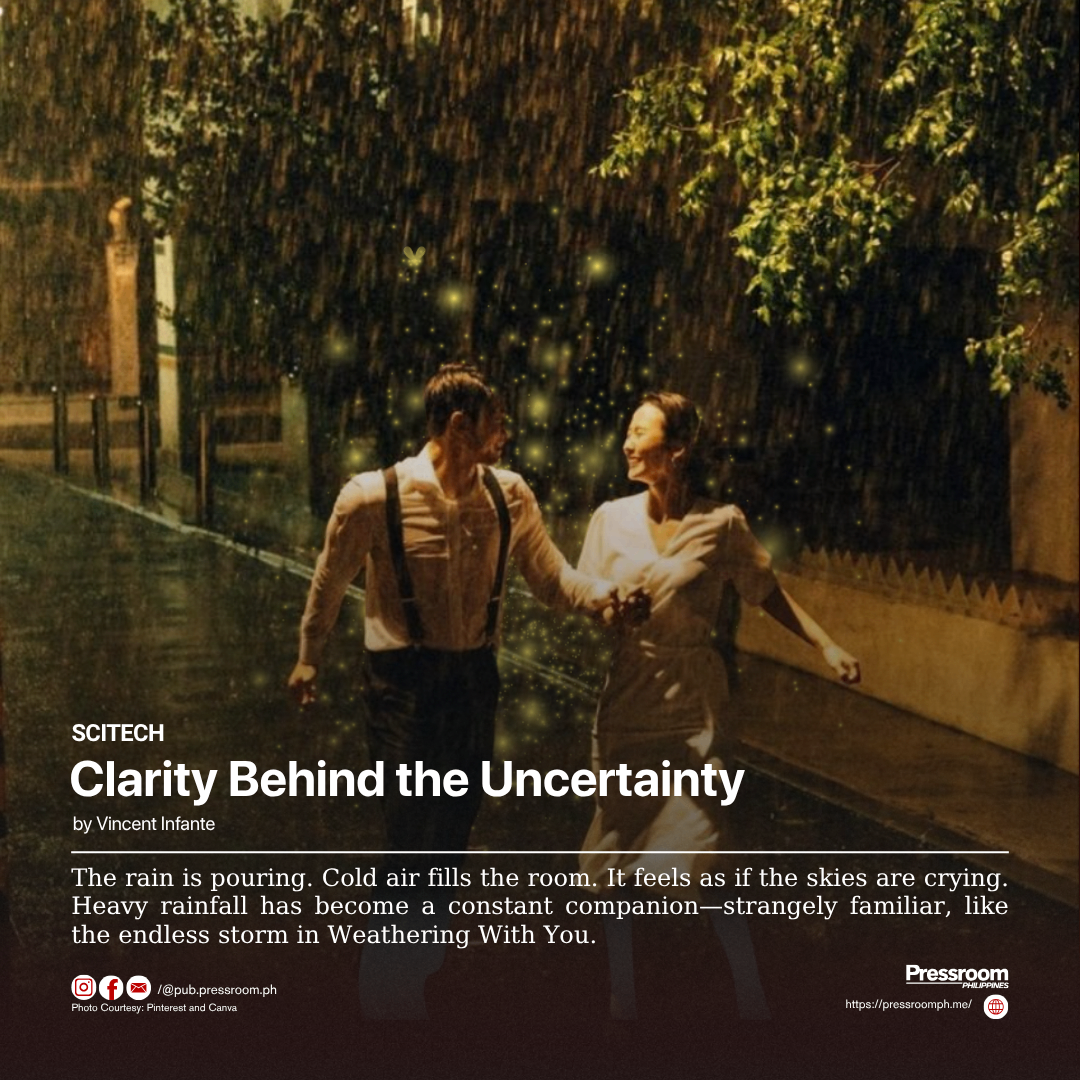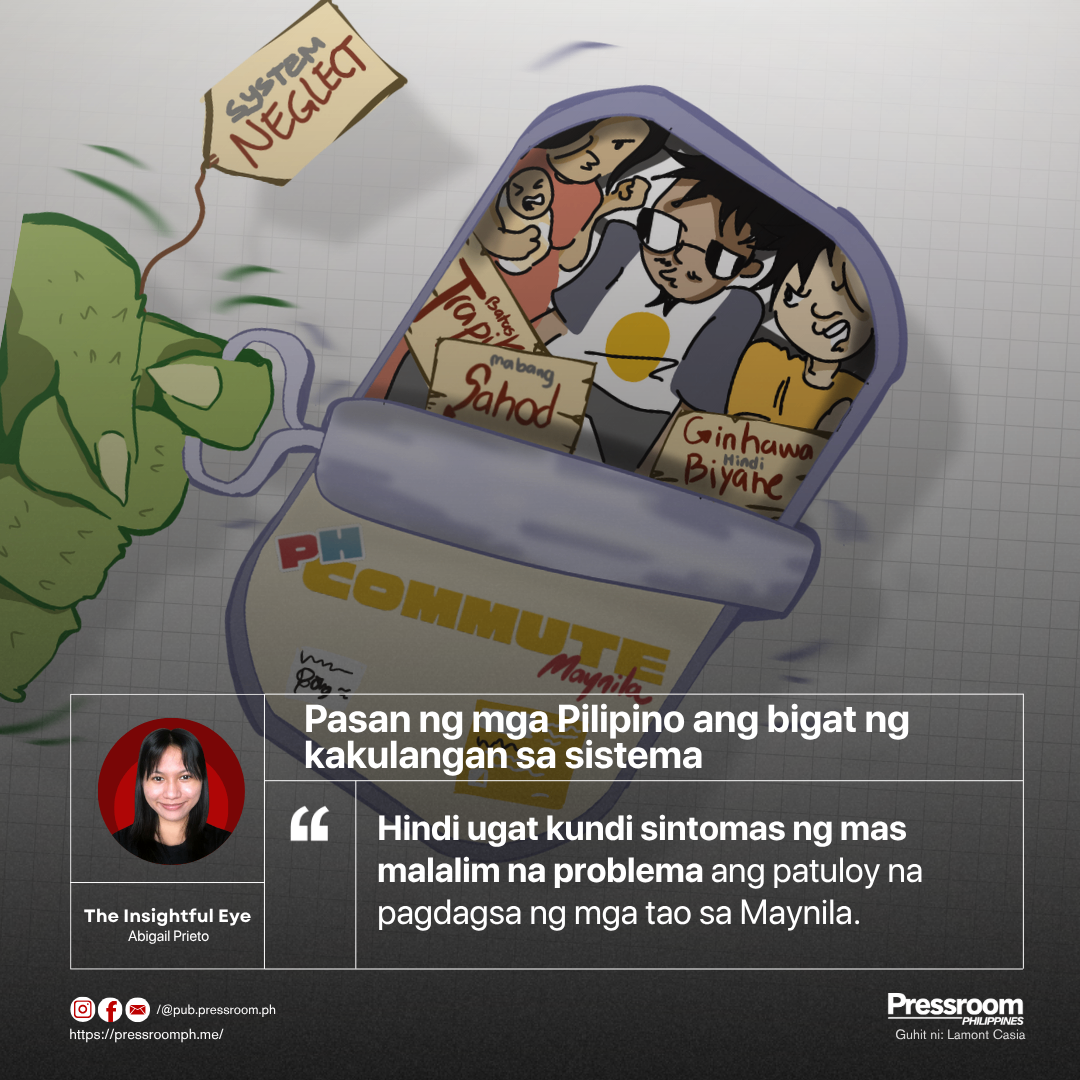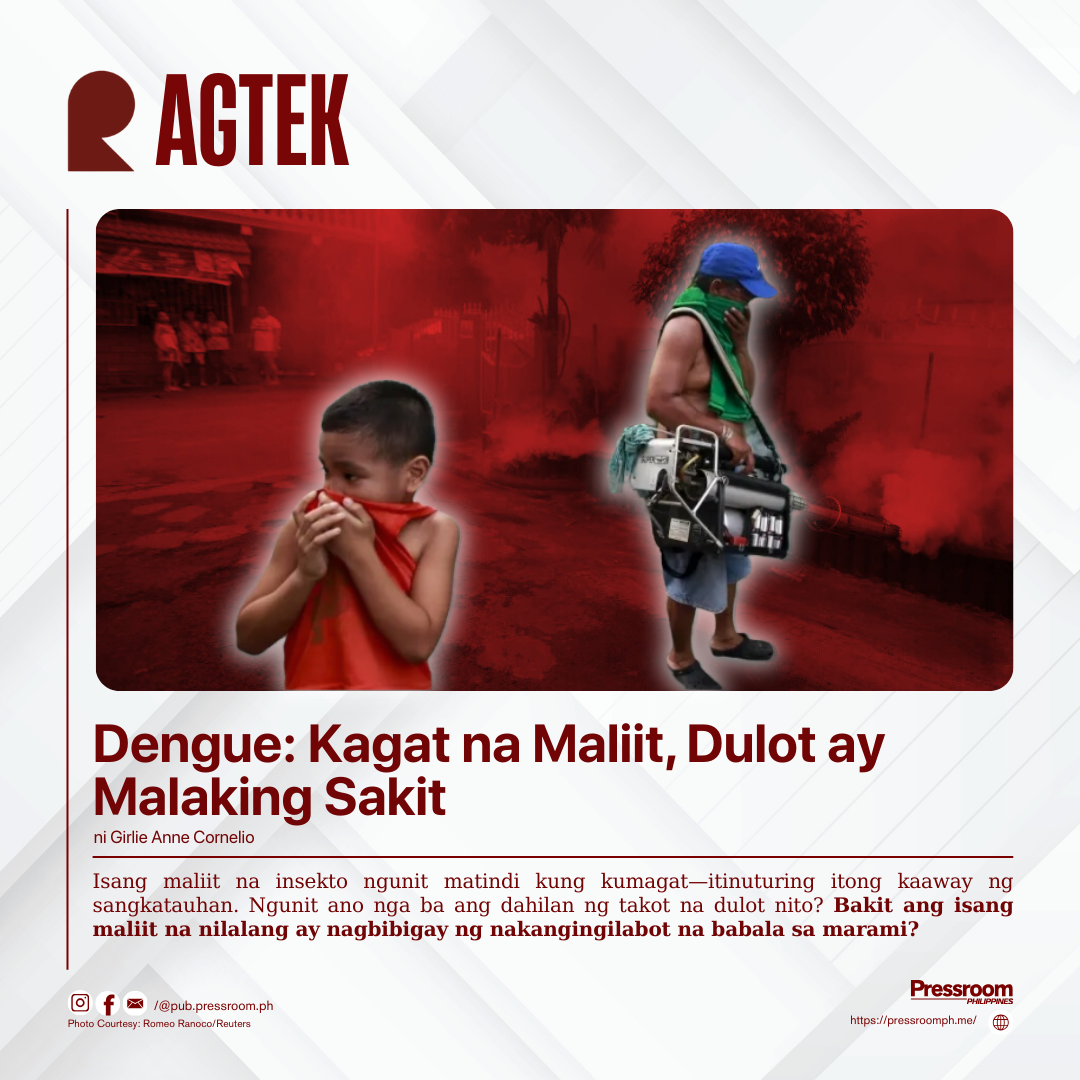𝘃𝗶𝗮 𝗩𝗶𝗻𝗰𝗲𝗻𝘁 𝗜𝗻𝗳𝗮𝗻𝘁𝗲, 𝗣𝗿𝗲𝘀𝘀𝗿𝗼𝗼𝗺 𝗣𝗛
The rain is pouring. Cold air fills the room. It feels as if the skies are crying. Heavy rainfall has become a constant companion—strangely familiar, like the endless storm in Weathering With You. Just as Tokyo was soaked in days of gray, our own skies now carry the same weight. But beneath these clouds, people still fall in love, huddled under umbrellas, sharing warmth in the cold. The rain is no longer just weather; it has become a symbol of resilience, romance, and hope.
Scientific data tells these rains aren’t random. Rising sea surface temperatures allow the atmosphere to hold more moisture, resulting in stronger, more frequent downpours. What once felt like an occasional threat has become an almost daily reality across the country. Climate change has turned rain from a blessing into a battleground.
Between 1961 and 2015, rainfall patterns in the Philippines shifted dramatically. Floods now come with little warning, swallowing roads, homes, and rice fields. In late 2024, six tropical cyclones—including five typhoons—struck within a month, displacing over 1.4 million people and claiming more than 170 lives. Our typhoon season has become more intense and unpredictable. Given these conditions, growing concern is only natural.
Experts point to climate change as the driving force. Warmer oceans fuel typhoons, and a hotter atmosphere holds more moisture. The result? Storms that are stronger, wetter, and longer-lasting. We’re caught in a vicious cycle—and the science warns it will only worsen. Being located in the typhoon belt of the Pacific makes us especially vulnerable. And in a developing nation where many live below the poverty line, more storms mean more devastation.
A 2024 study by the World Weather Attribution team found that climate change has nearly doubled the likelihood of extreme rainfall events. Greenpeace echoed this warning, adding that future typhoons may come in rapid succession, giving communities little time to recover. We are no longer merely bracing for storms—we are enduring them.
Weathering With You brings this crisis to life through fiction. Hina, a girl who can stop the rain with her prayers, becomes a symbol of sacrifice. Her love story with Hodaka unfolds under umbrellas—but even they cannot stop the flood forever. Their story mirrors our own: the pursuit of clarity amid chaos. It reflects the Filipino spirit of bayanihan—our deep sense of connection and natural willingness to help one another. A love that needs no explanation.
The film doesn’t end with a miracle—it ends with a choice: love, even if the world drowns. This offers a powerful truth. We can’t always prevent what’s coming, but we can choose how we face it. Whether it's holding someone close during a blackout or rebuilding a home after a flood, love becomes resistance. Some even say love can transcend dimensions. The bonds we build through it touch the soul in ways that endure.
Here in our rain-soaked islands, the message is clear. Science can explain the storms—but only love and collective action can carry us through them. Weathering With You doesn’t just show us the rain. It reminds us that even in the harshest weather, hearts still shine. As cliché as it sounds, love is a force that truly shapes our lives. Where there is love, there is understanding; with understanding comes peace, with peace comes harmony—and from harmony, hope.
Nature may test us in many ways, but if there’s one thing that has carried humanity through time, it’s love—the enduring kind. And with that, there will always be clarity behind the uncertainties.






